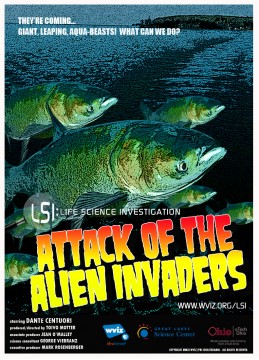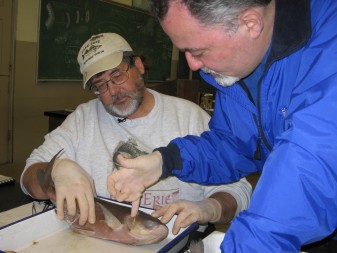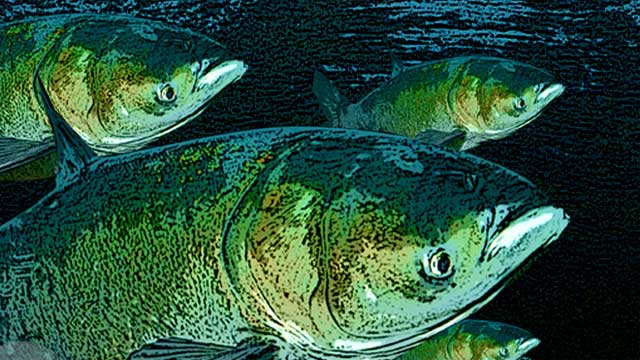
Lake Erie is considered to be the most productive of all five of the Great Lakes.Within its waters are diverse and interdependent plants and animals that make up an intricate web of life. Mostly due to human carelessness, the lake has become home to an increasing number of non-native plants, animals, and micro-organisms which threaten the balance of the entire ecosystem.
In the WVIZ/PBS program, Attack of the Alien Invaders, Dante Centuori, Director of Creative Productions at the Great Lakes Science Center in Cleveland, Ohio, traveled in and around Lake Erie visiting with scientists and government officials who are investigating Lake Erie’s ecosystem, the challenges it has faced in the past, as well as those it may face in the future. Of particular interest was one of the biggest potential threats to the lake- a voracious invasive species collectively called “Asian carp.”
Bighead carp (Hypophthalmichthys nobilis) and Silver carp (Hypophthalmichthys molitrix) were first introduced to the U.S. in the 1970s as a chemical-free and “environmentally friendly” way of cleaning up algae in southern fish farms and water treatment plants. During the Mississippi River floods of the early 1990s, these fish escaped into “The Big River” and its tributaries. Since then, these big, hungry, and prolific fish have made their way north all the way up to the back door of the Great Lakes. If they enter the Great Lakes, it is feared that these fish will continue on to Lake Erie where they could further disrupt the Great Lakes’ most productive ecosystem, with unknown long-term consequences.

Dante first visited Stone Laboratory, a research facility located in the Western Basin of Lake Erie in Put-in-Bay, Ohio. There, he met John Hageman who displayed, and dissected a Silver carp; revealing an anatomical structure that makes these fish particularly threatening to the food energy balance so important to Lake Erie’s native inhabitants. Dante then accompanied another Stone Lab researcher on a good old fashioned Lake Erie “fish trawl” where he came across many of the lake’s native and invasive species-- such as the omnipresent zebra mussel and the abundant quagga mussel, two detrimental invasives brought in to the Great Lakes by the ballast water of ocean-going vessels.
Dante continued on to Old Woman Creek, a national research center and fresh water estuary in nearby Huron, Ohio, where he encountered some frisky common carp (Cyprinus carpio) whose behavior may help scientists predict what may happen to Ohio’s interior rivers and streams, if their distant relatives from the east choose to join them. Next, he returned to Stone Lab to investigate how the Bighead and Silver carp have influenced and impacted the native species of the Mississippi and Illinois River ecosystems. He next traveled to Lake Erie’s Central Basin- to Cleveland, Ohio for a rendezvous with a federal employee who explained how Asian carp are being monitored and controlled in one of the most probable points of entry into the Great Lakes, Chicago’s Shipping and Sanitary Canal at the southern end of Lake Michigan.
